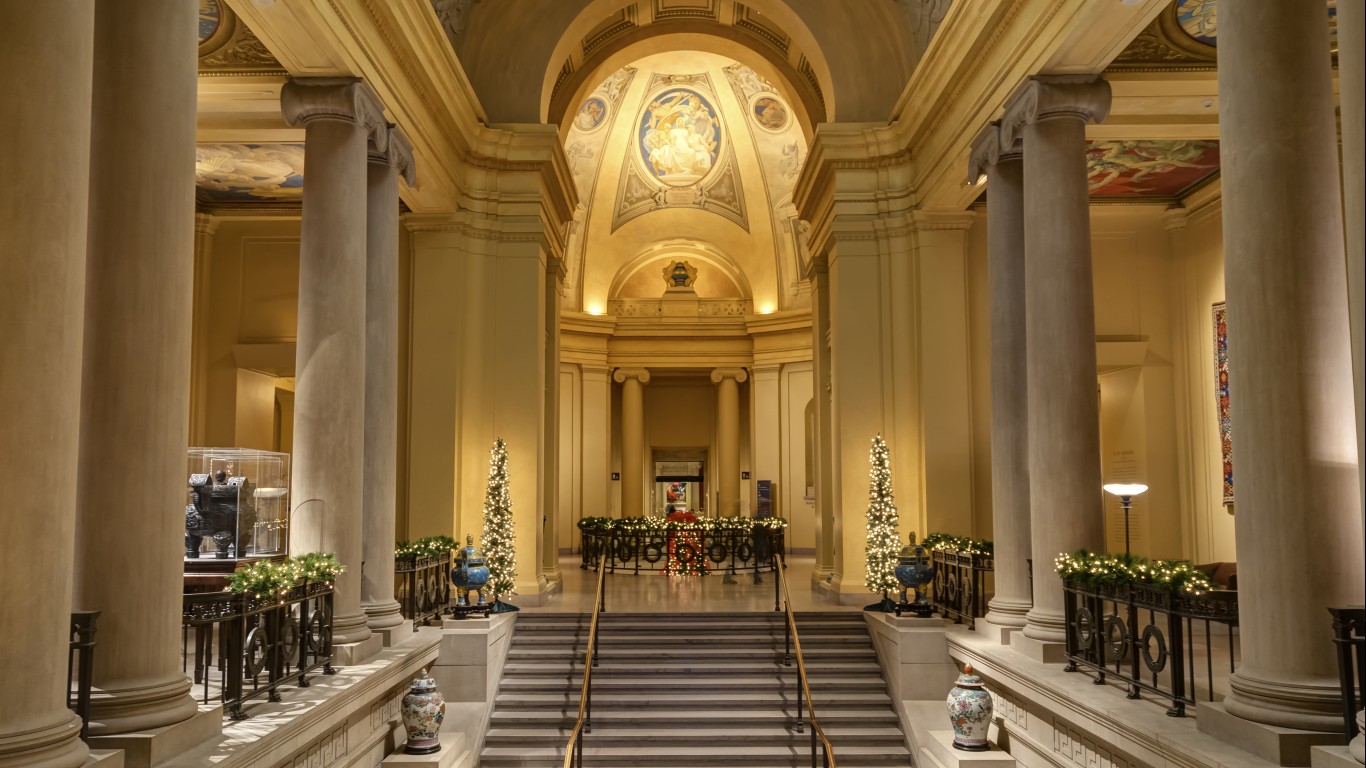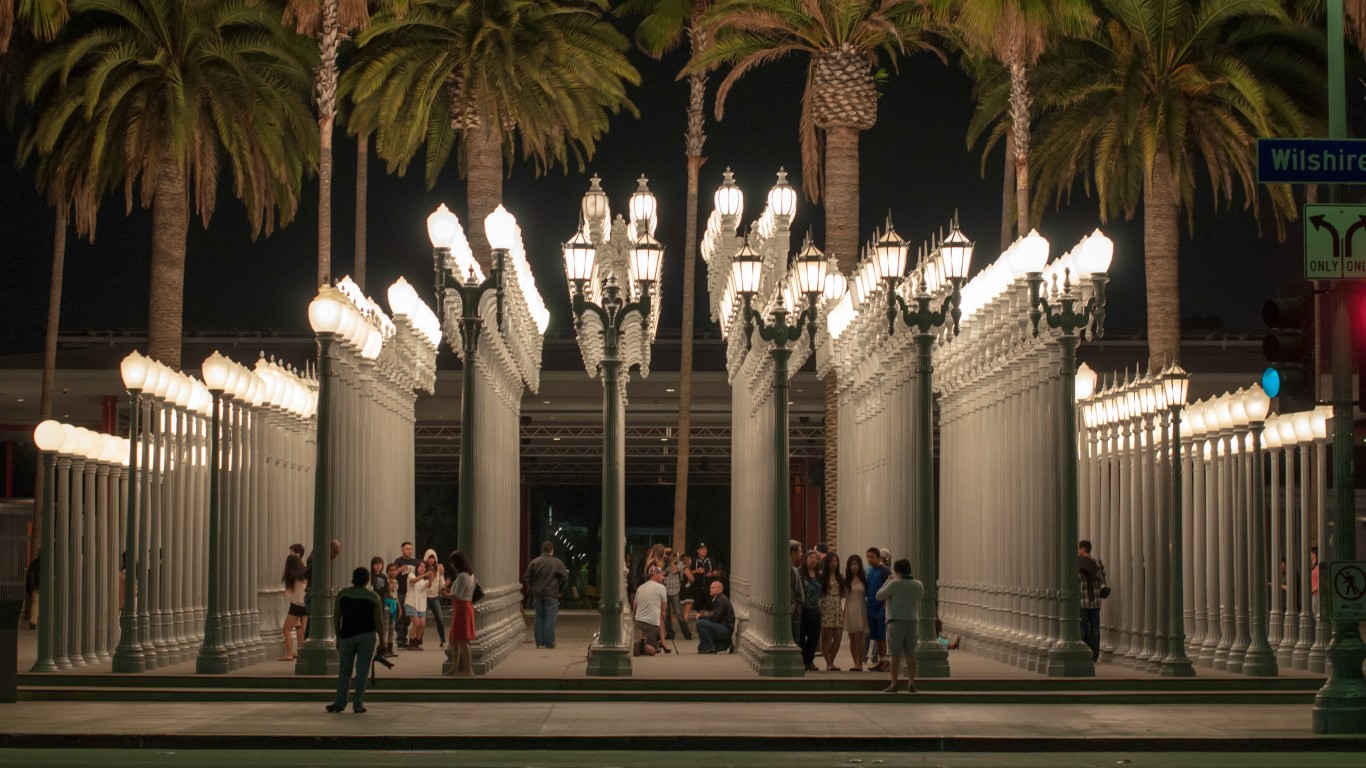
Following protests and civil unrest nationwide over the police killings of unarmed Black Americans, notably the May 25, 2020, murder of George Floyd by a Minneapolis police officer, many of the nation’s organizations looked inward to check their progress (if any) in combating racial injustice. Institutional racism has persisted in the U.S. in one form or another since the post-Civil War Reconstruction era. (These are the worst cities for Black Americans.)
The nation’s art museums were no exception to this reckoning – and for obvious reasons. A visit to any major museum in the U.S. is a showcase of some of the greatest works by past and present white artists.
A major art museum with 20% of works and exhibitions featuring nonwhite artists can consider itself as having among the most diverse collections in the country. This, even though nonwhites make up nearly 39% of the national population, and in some cities like New Haven, Connecticut, and Baltimore, whites are in the minority of the local population.
To determine the most racially diverse art museums, 24/7 Tempo reviewed data from the 2019 research article “Diversity of artists in major U.S. museums” by Topaz et al., published in the peer-reviewed open access scientific journal PLOS One. Art museums were ranked based on the likelihood that two artworks in a museum picked at random would be by artists of different ethnicity. (Find out if some of these museums are among the most expensive museums in America.)
This recent reckoning has not just involved reviewing the racial makeup of the artists in museum collections and exhibits, but also examining the racial and gender profiles of boards of trustees and floor staff.
Last year, the Art Institute of Chicago took an unprecedented step of firing its entire staff of volunteer docents – most of them white women who could afford to work for free – and replaced them with a more diverse and paid staff. The High Museum in Atlanta saw the number of nonwhite visitors jump from 15% to 45% after implementing a multi-prong strategy that included diversifying its staff. This move to improve diversity in the nation’s top art museums is new and still has a long way to go.
Here are the most racially diverse art museums in America
Click here to read our detailed methodology
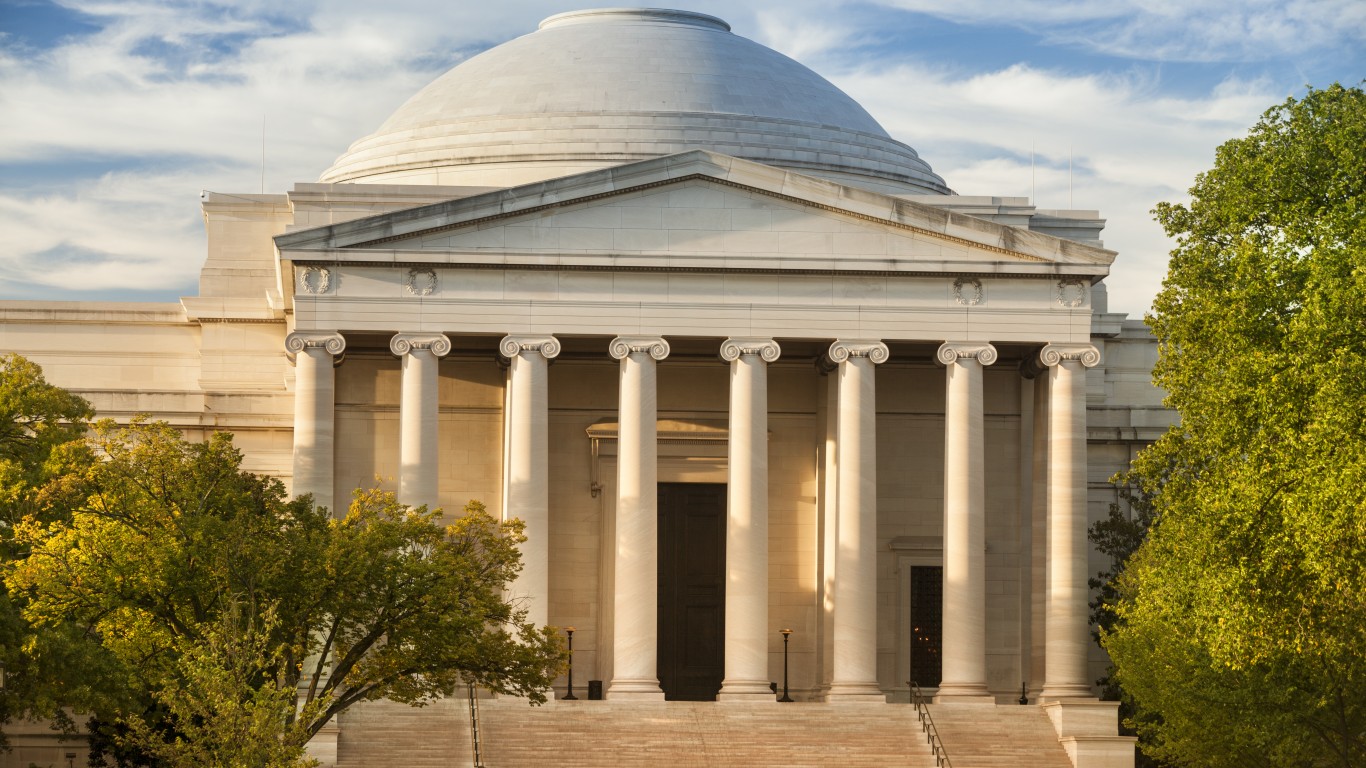
18. National Gallery of Art
> Odds two random artworks are by artists of a different race: 5.1%
> Pct. of collection by white artists: 97.4%
> Pct. of collection by Black artists: <0.1%
> Pct. of collection by Hispanic or Latino artists: 0.6%
> Pct. of collection by Asian artists: 1.3%
> Location: Washington, D.C.
As with the other museums on this list, the National Gallery of Art’s collection is dominated by white artists. The museum reopened its doors last May after a six-month closure under a new mantra, “Of the nation and for all people,” with a vision of diversifying its collection under the guidance of its first female director Kaywin Feldman.
[in-text-ad]
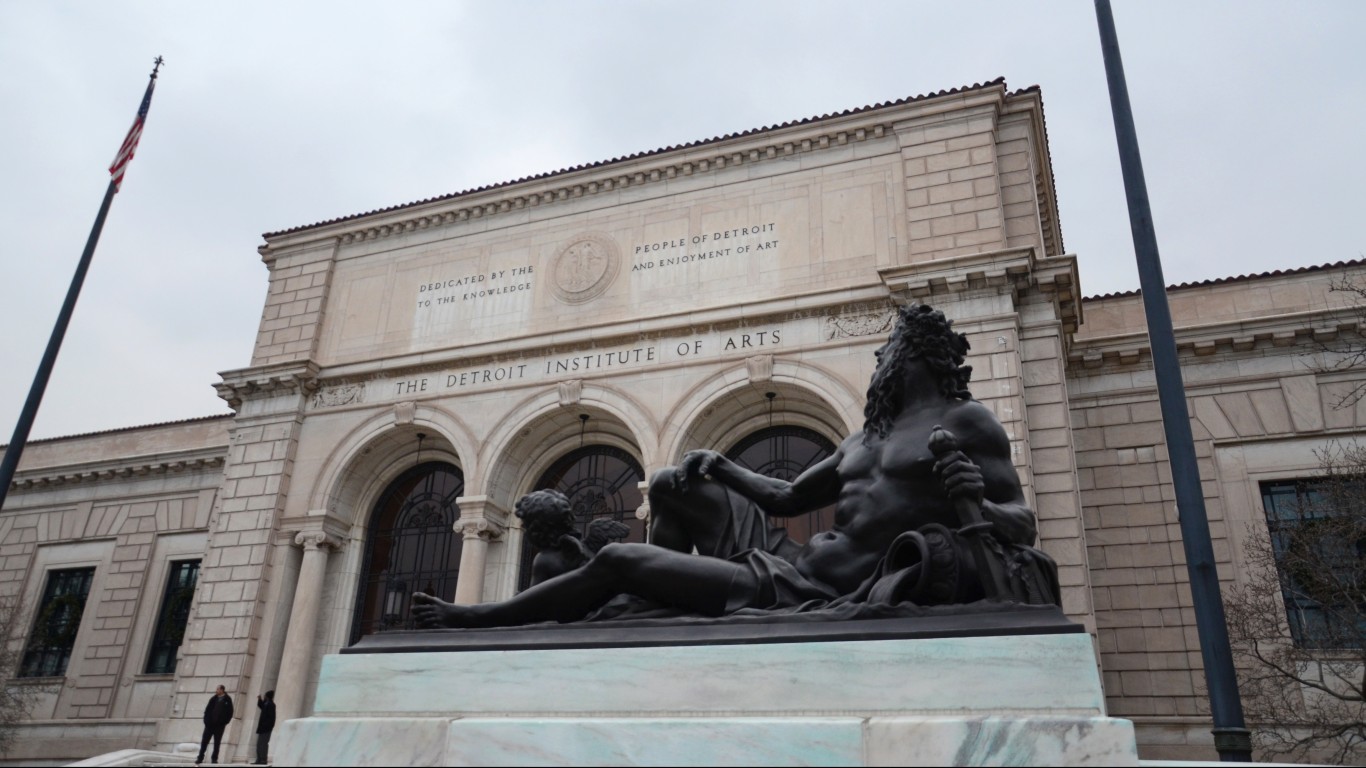
17. Detroit Institute of Arts
> Odds two random artworks are by artists of a different race: 10.2%
> Pct. of collection by white artists: 94.7%
> Pct. of collection by Black artists: 1.6%
> Pct. of collection by Hispanic or Latino artists: 0.4%
> Pct. of collection by Asian artists: 2.8%
> Location: Detroit, MI
After facing criticism for years for ignoring the desires of the communities it purports to serve, the Detroit Institute of Arts hired a new diversity director last year, Carla Tinsley-Smith. Tinsley-Smith aims to focus on developing a more inclusive workplace environment, while the museum board of directors says it’s committed to acquiring more works from Black artists.
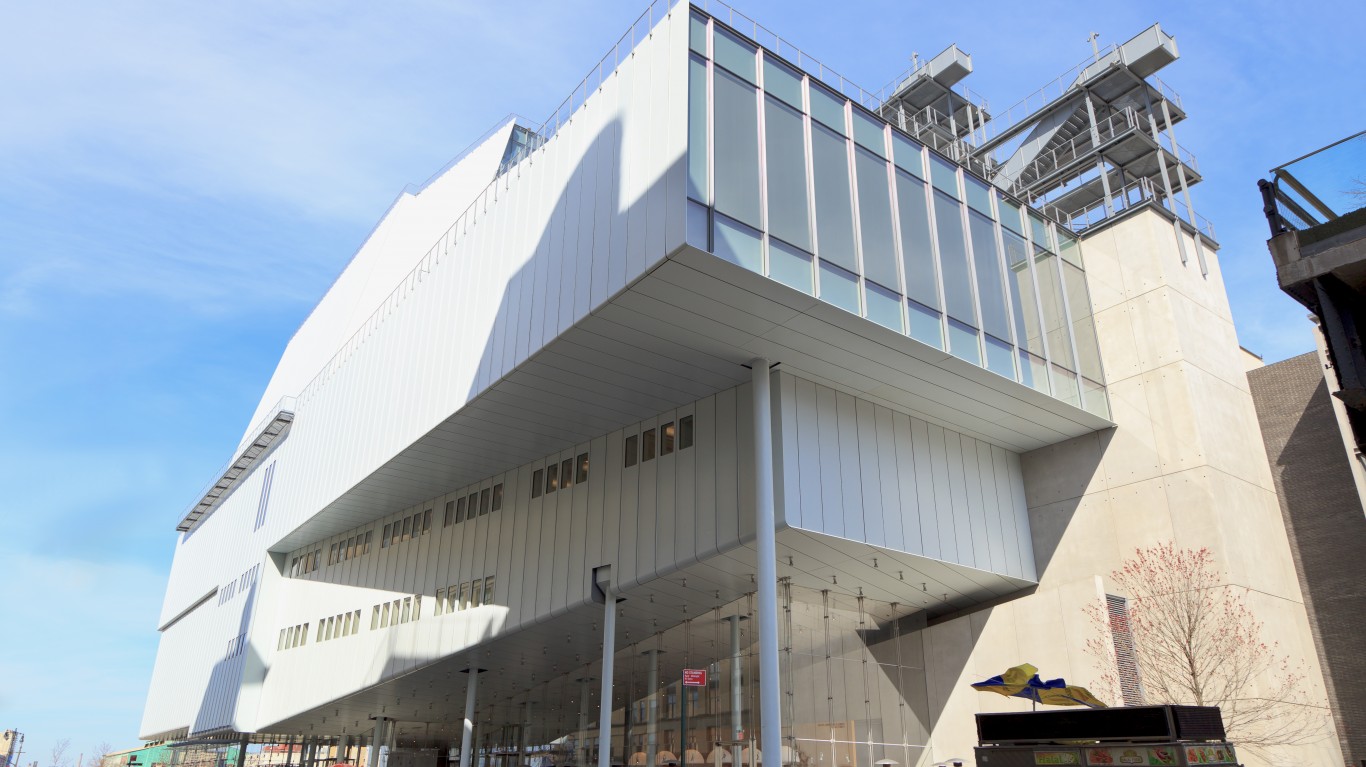
16. Whitney Museum of American Art
> Odds two random artworks are by artists of a different race: 15.7%
> Pct. of collection by white artists: 91.7%
> Pct. of collection by Black artists: 2.3%
> Pct. of collection by Hispanic or Latino artists: 2.3%
> Pct. of collection by Asian artists: 2.8%
> Location: New York, NY
In August 2020, the Whitney Museum cancelled a show featuring Black artists after the artists discovered their work had been acquired at discounted prices without their knowledge by fundraisers aimed at benefiting racial justice causes. The Whitney acknowledges that it has “made mistakes” in the past, adding “We have increased the racial diversity of our collection.”
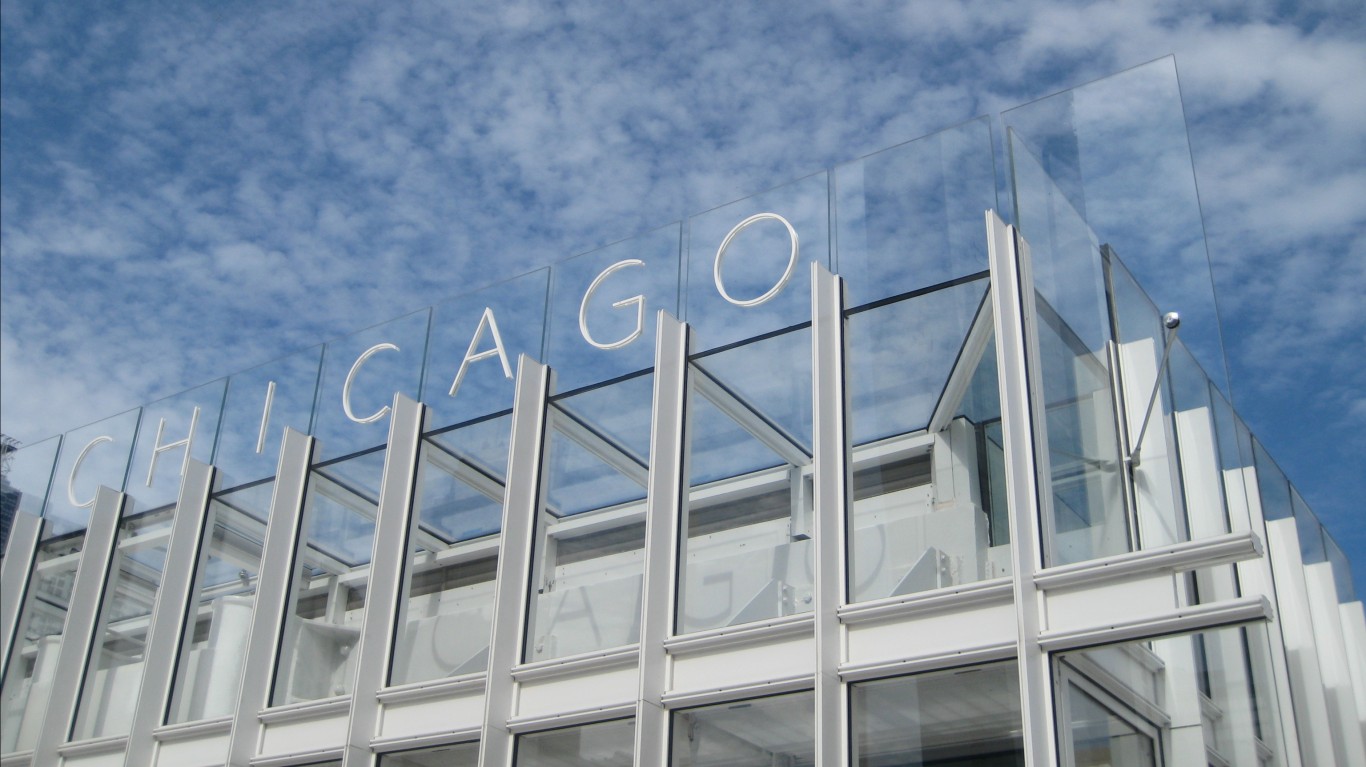
15. Art Institute of Chicago
> Odds two random artworks are by artists of a different race: 17.7%
> Pct. of collection by white artists: 90.4%
> Pct. of collection by Black artists: 0.3%
> Pct. of collection by Hispanic or Latino artists: 2.0%
> Pct. of collection by Asian artists: 7.0%
> Location: Chicago, IL
The Art Institute of Chicago was criticized for efforts to be less white when it fired all its volunteer docents (most of them white, affluent women) and replaced them with a paid, racially diverse staff. Like others, the museum is taking a two-prong approach to boosting diversity, by focusing on diversifying its staff and its exhibitions.
[in-text-ad-2]
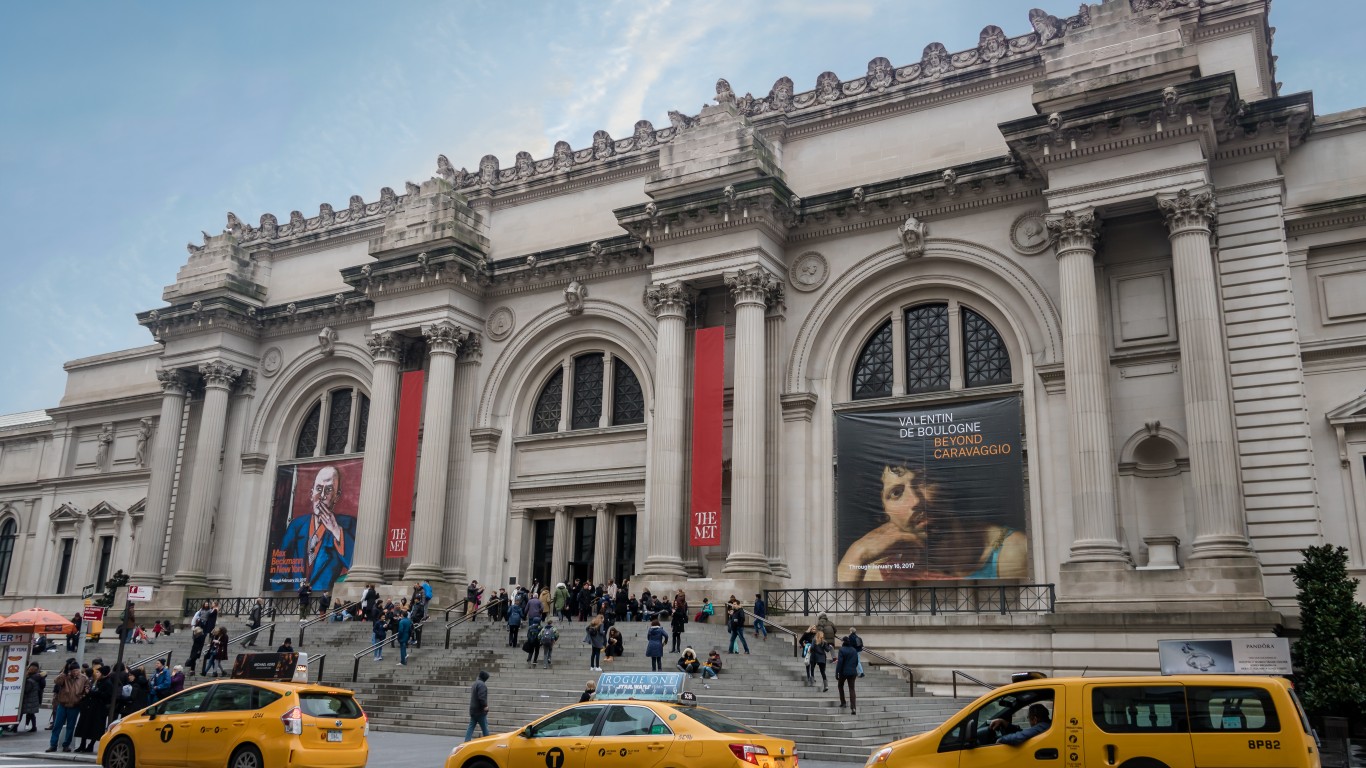
14. Metropolitan Museum of Art
> Odds two random artworks are by artists of a different race: 20.3%
> Pct. of collection by white artists: 88.9%
> Pct. of collection by Black artists: 0.2%
> Pct. of collection by Hispanic or Latino artists: 1.5%
> Pct. of collection by Asian artists: 8.1%
> Location: New York, NY
After facing growing pressure from within the organization, the Met, as it’s known, pledged to spend $3 million to support exhibitions and acquisitions “in the area of diverse art histories.” In November 2020, the museum named its first diversity officer.
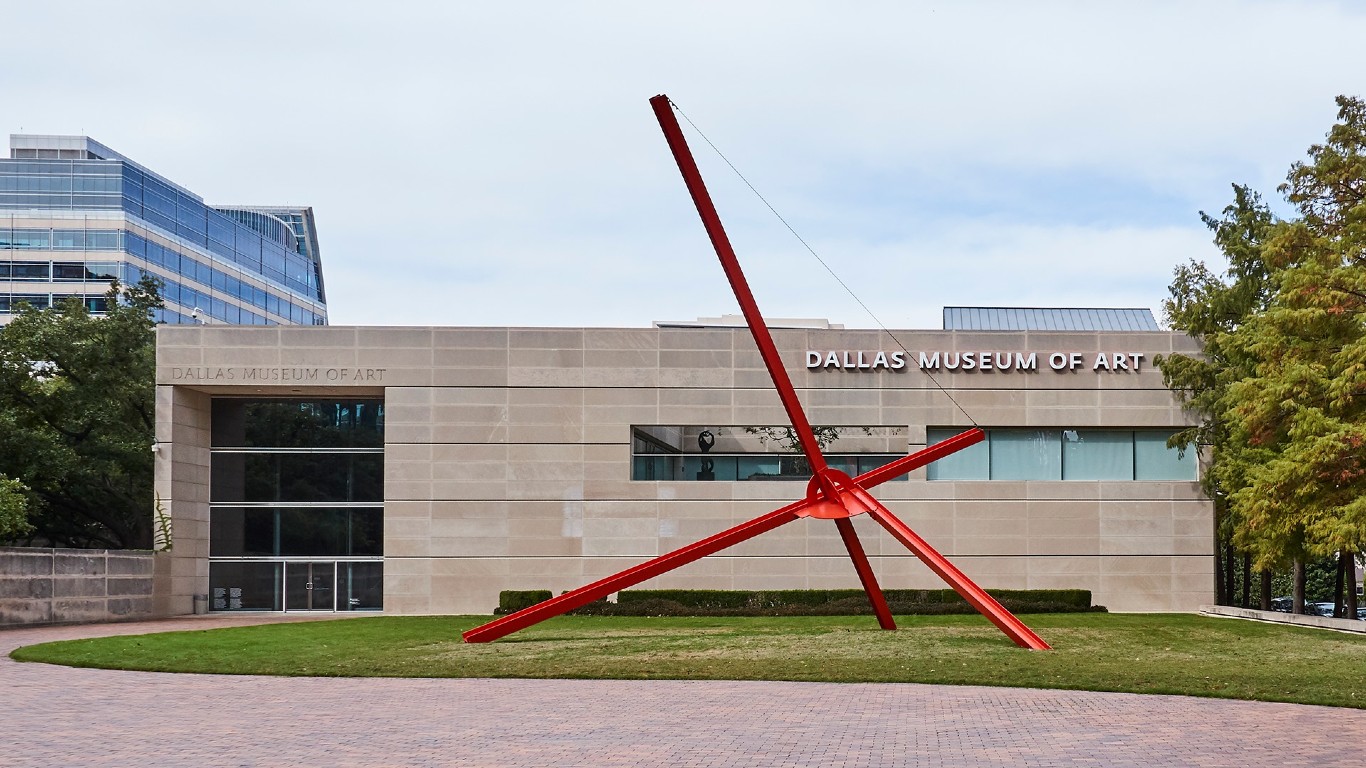
13. Dallas Museum of Art
> Odds two random artworks are by artists of a different race: 20.9%
> Pct. of collection by white artists: 88.7%
> Pct. of collection by Black artists: 0.8%
> Pct. of collection by Hispanic or Latino artists: 2.8%
> Pct. of collection by Asian artists: 4.2%
> Location: Dallas, TX
Last year, the Dallas Museum of Art put on display its most recent acquisition at the time, “Sam F,” a painting by 1980s New York City artist Jean Michel-Basquiat. The acquisition was part of the museum’s efforts to boost its collection of art produced by nonwhite artists under the direction of Augustin Arteaga, who was hired six years ago from Mexico City.
[in-text-ad]
12. Museum of Fine Arts, Houston
> Odds two random artworks are by artists of a different race: 21.1%
> Pct. of collection by white artists: 88.6%
> Pct. of collection by Black artists: 1.1%
> Pct. of collection by Hispanic or Latino artists: 4.8%
> Pct. of collection by Asian artists: 4.3%
> Location: Houston, TX
Houston is one of the country’s largest and most ethnically diverse cities, but critics say the city’s Museum of Fine Arts continues to be slow to incorporate diversity in its exhibitions. Things may be changing. In 2019, Houston-area museums pledged to increase the diversity of their boards and collections.
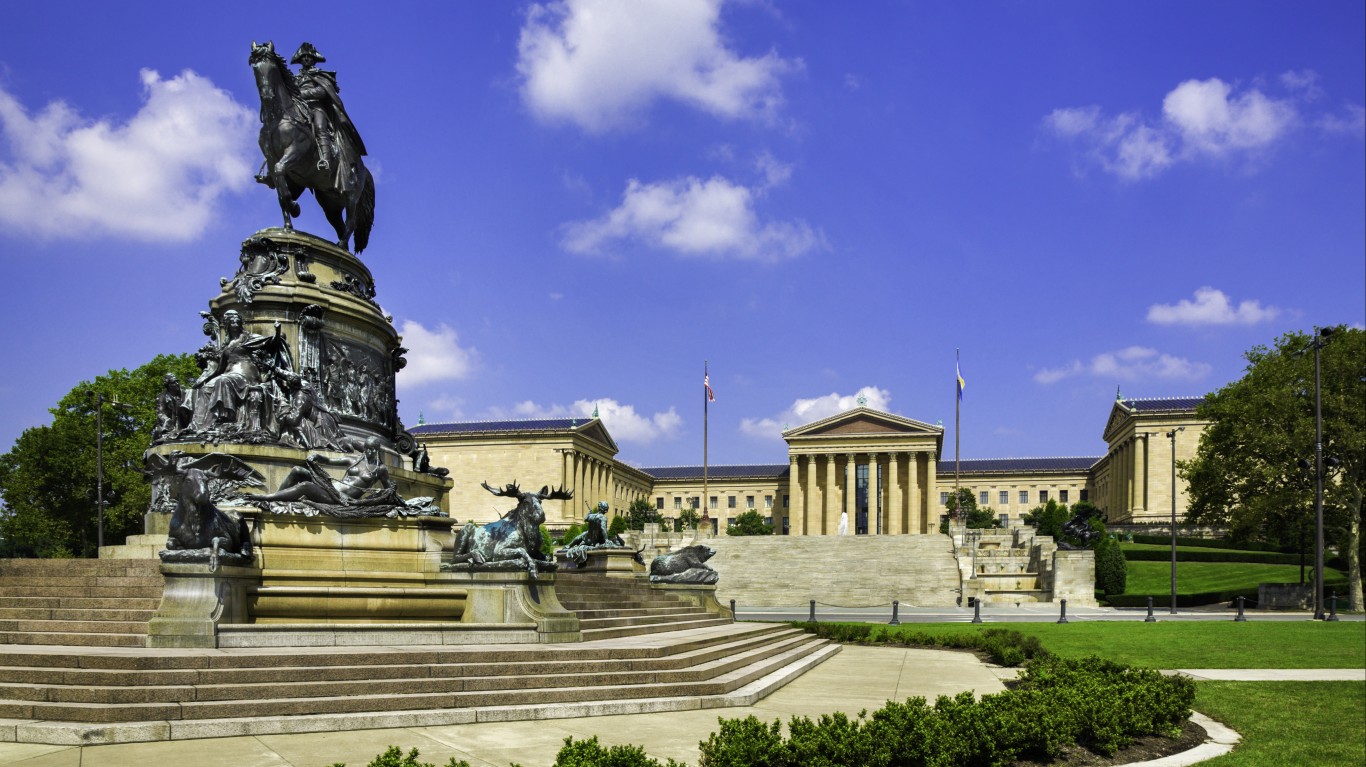
11. Philadelphia Museum of Art
> Odds two random artworks are by artists of a different race: 22.2%
> Pct. of collection by white artists: 87.8%
> Pct. of collection by Black artists: 1.1%
> Pct. of collection by Hispanic or Latino artists: 2.4%
> Pct. of collection by Asian artists: 8.3%
> Location: Philadelphia, PA
The Philadelphia Museum of Art had a tumultuous 2020 with developments including allegations of sexual misconduct, followed by COVID-19 shutdowns and ensuing furloughs and layoffs, and certification of the museum’s first employee union. Since then, the museum has reportedly ramped up efforts to increase diversity of its staff and board and named its first diversity director last August.
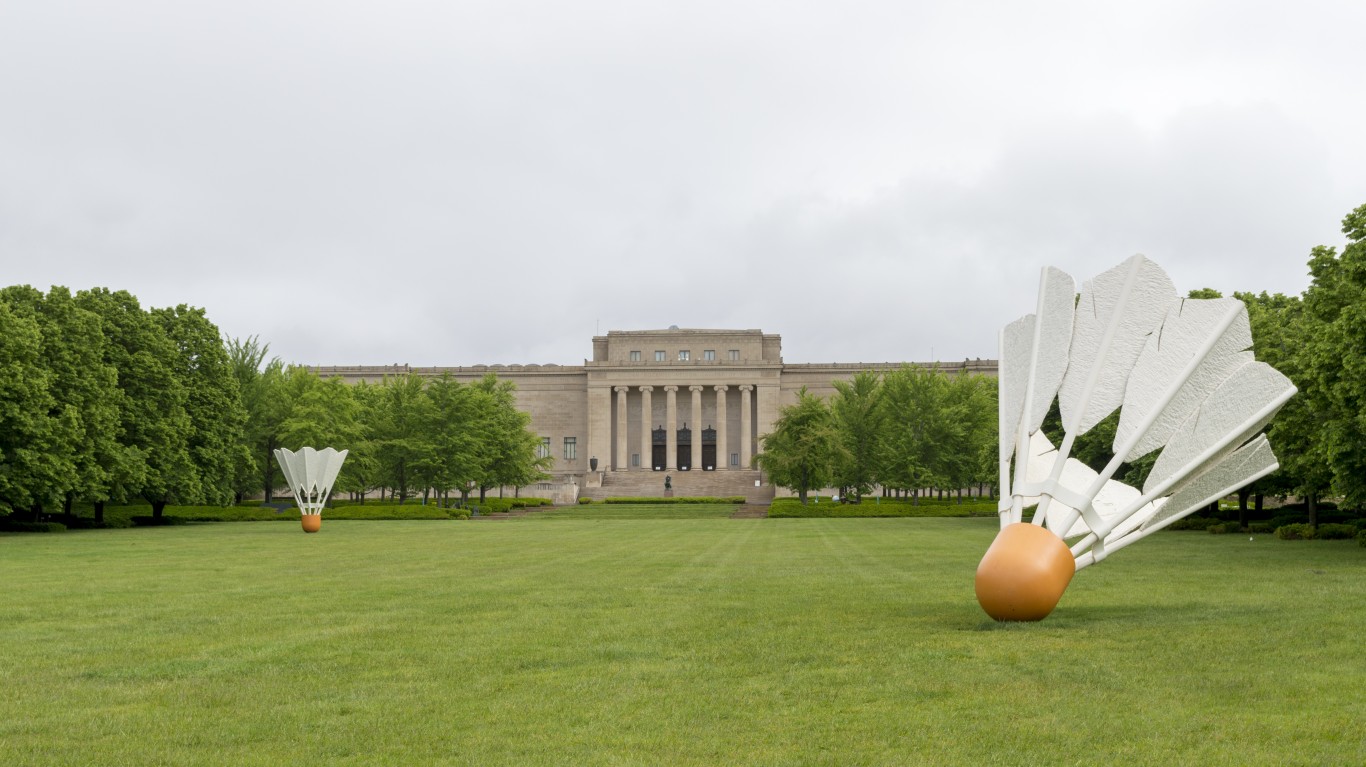
10. Nelson-Atkins Museum of Art
> Odds two random artworks are by artists of a different race: 24.4%
> Pct. of collection by white artists: 86.4%
> Pct. of collection by Black artists: 0.4%
> Pct. of collection by Hispanic or Latino artists: 1.3%
> Pct. of collection by Asian artists: 9.5%
> Location: Kansas City, MO
The namesake of the Nelson-Atkins Museum of Art, William Rockhill Nelson, an active segregationist and founder of The Kansas City Star newspaper, became a matter of contention in recent years. But the museum’s board voted to keep the name while also implementing a strategic plan that “honors the past, while recognizing that the museum be a place of dialogue regarding current issues.” Recently, the museum collaborated with Kansas City-based African American Artists Collective and launched an exhibition featuring Black artists.
[in-text-ad-2]
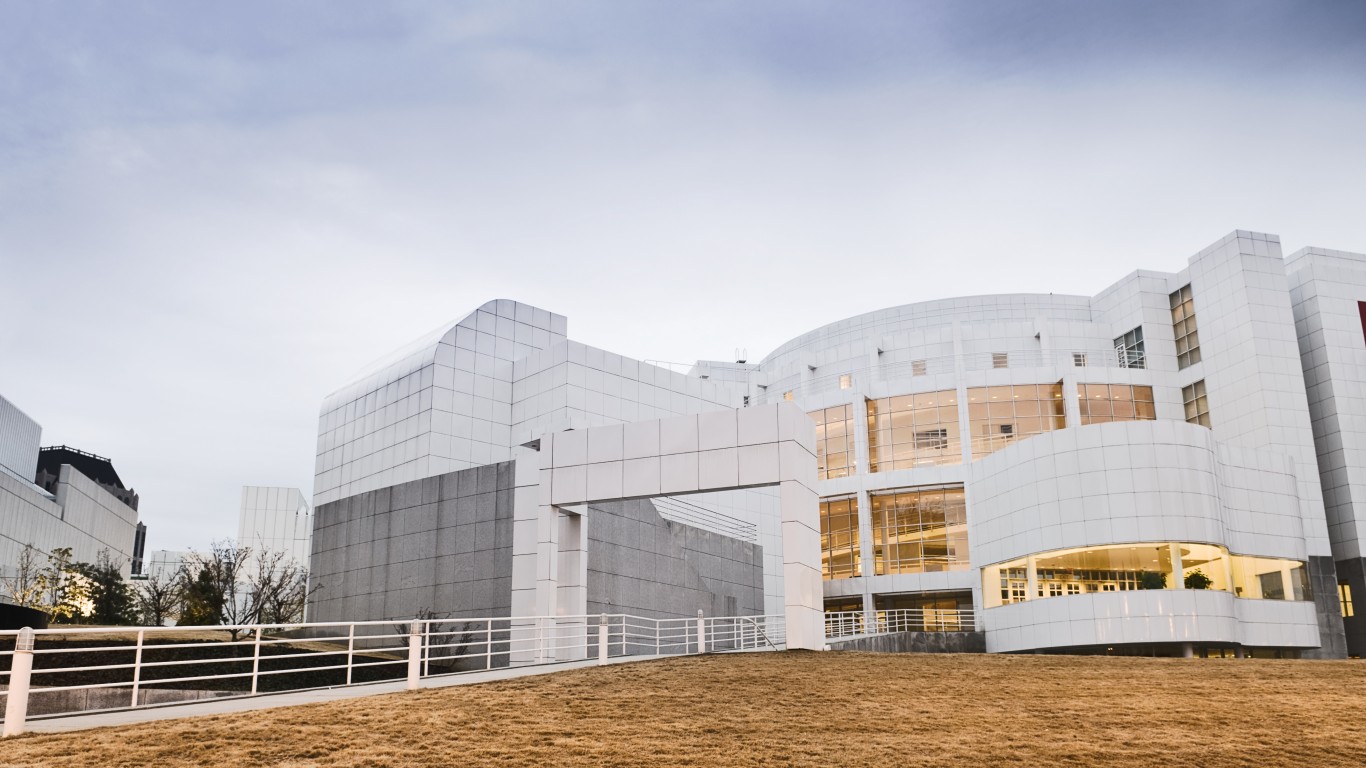
9. High Museum of Art
> Odds two random artworks are by artists of a different race: 24.5%
> Pct. of collection by white artists: 86.2%
> Pct. of collection by Black artists: 10.6%
> Pct. of collection by Hispanic or Latino artists: 1.4%
> Pct. of collection by Asian artists: 0.9%
> Location: Atlanta, GA
The museum is best known for its costly three-year partnership with the Louvre, but it also increased the number of in-house exhibitions featuring artists of color. The result was a significant increase in the number of nonwhite visitors.
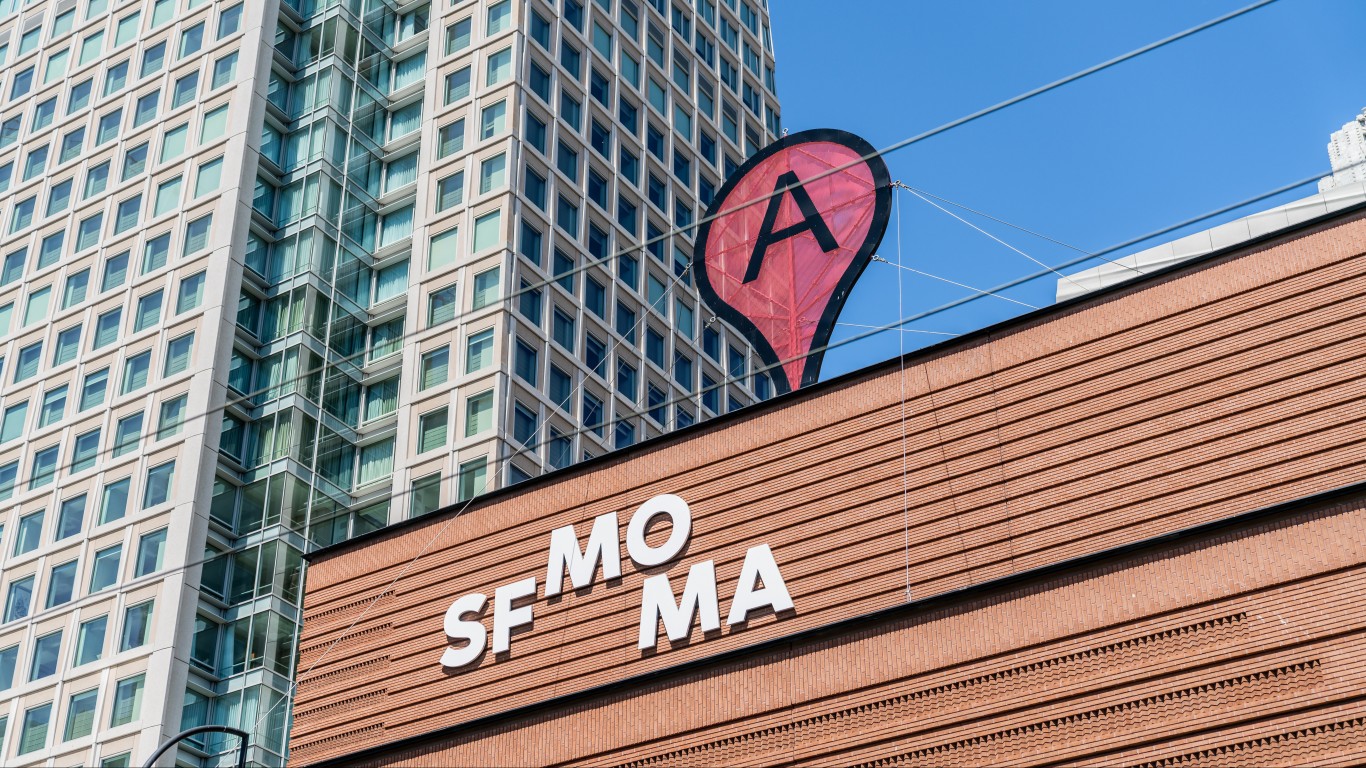
8. San Francisco Museum of Modern Art
> Odds two random artworks are by artists of a different race: 24.7%
> Pct. of collection by white artists: 86.4%
> Pct. of collection by Black artists: 2.0%
> Pct. of collection by Hispanic or Latino artists: 3.3%
> Pct. of collection by Asian artists: 7.1%
> Location: San Francisco, CA
The San Francisco Museum of Modern Art tumbled into controversy in 2020 after it published an Instagram post featuring Black artist Glenn Ligon as a response to national protests against police brutality. At the time, the museum was dealing with accusations of racism from former employees, five of them senior staffers who had resigned. After facing criticisms that included its collecting and programming practices, the museum has since announced changes to increase equity.
[in-text-ad]
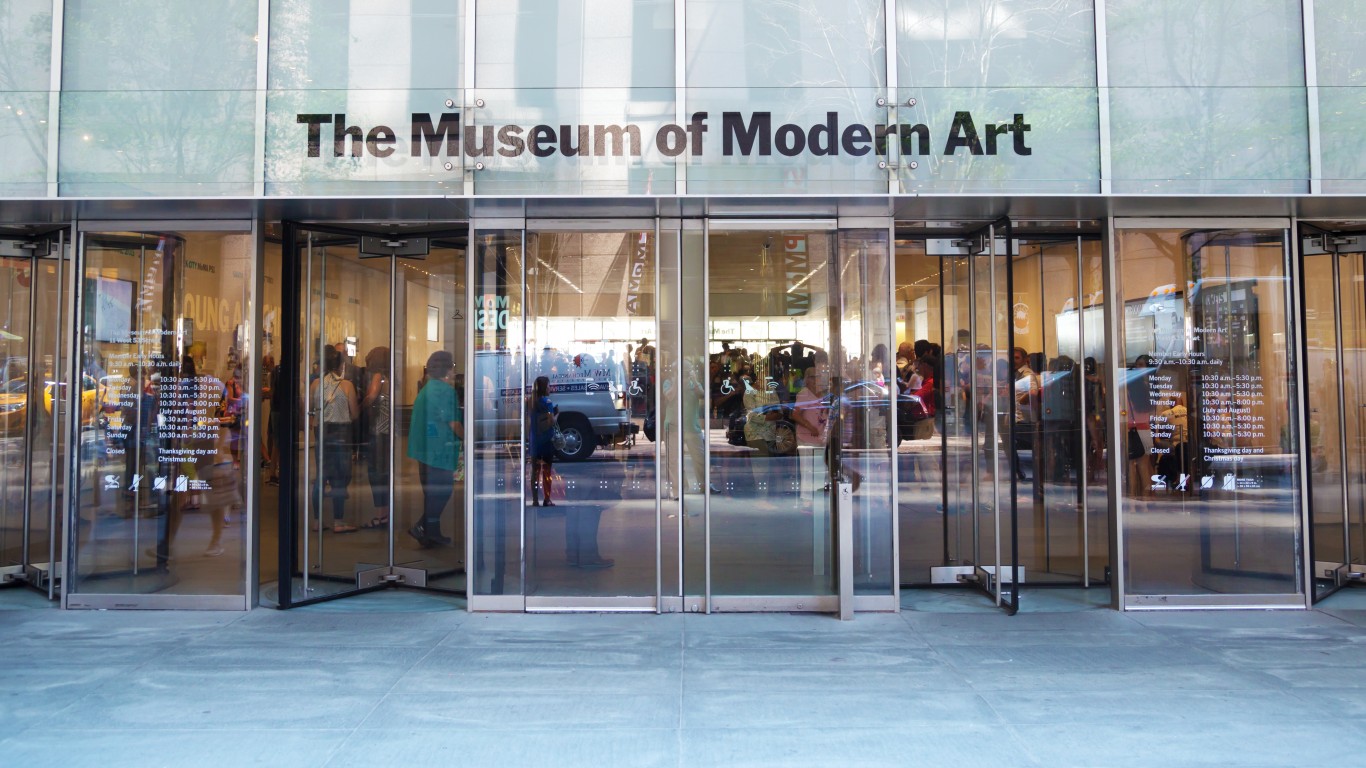
7. Museum of Modern Art
> Odds two random artworks are by artists of a different race: 29.9%
> Pct. of collection by white artists: 83.0%
> Pct. of collection by Black artists: 2.0%
> Pct. of collection by Hispanic or Latino artists: 3.7%
> Pct. of collection by Asian artists: 10.0%
> Location: New York, NY
After facing years of criticism for the lack of nonwhite representation in its programming, the MoMA announced in 2019 that it would increase diversity following its $450 million expansion, renovation, and reopening in October 2019. Since then, the MoMA has increased the number of solo shows devoted to nonwhite artists thanks in part to the hiring of more nonwhite curators.
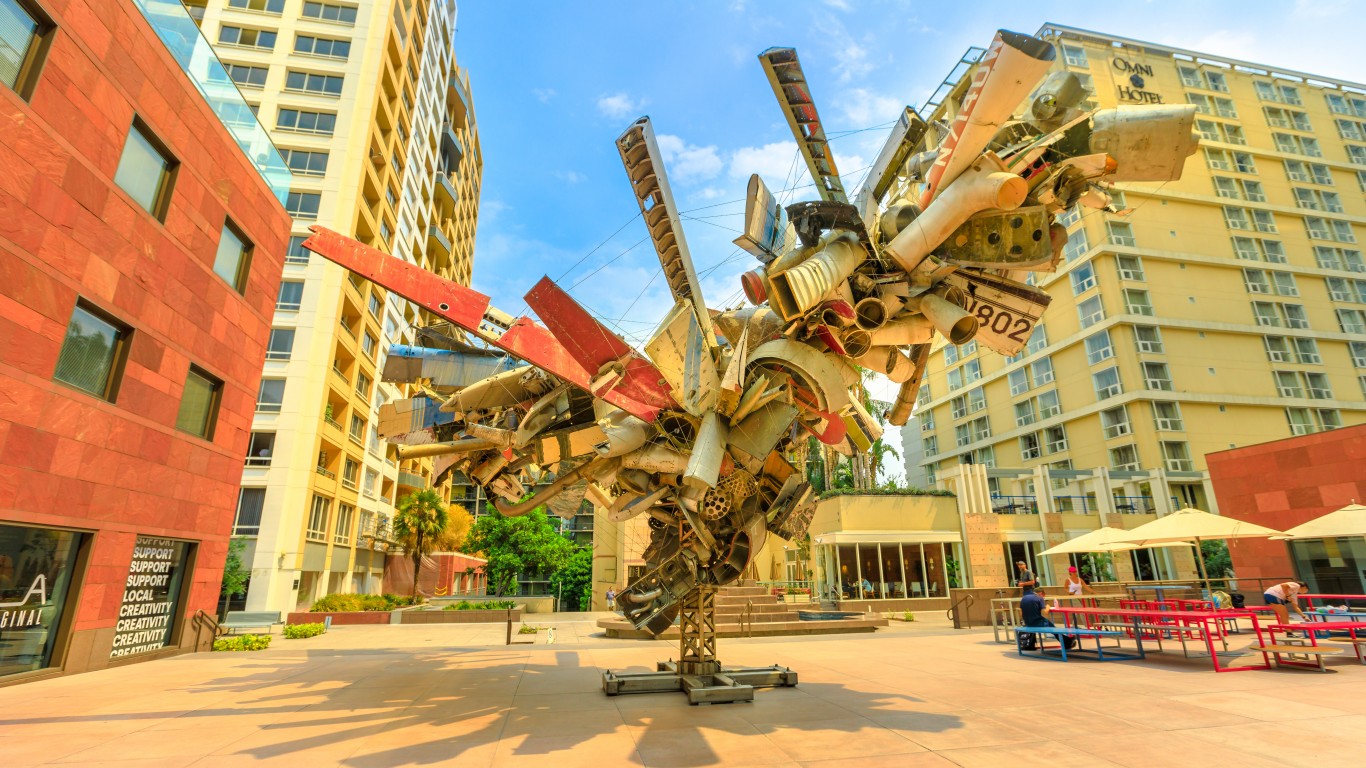
6. Museum of Contemporary Art, Los Angeles
> Odds two random artworks are by artists of a different race: 30.5%
> Pct. of collection by white artists: 82.8%
> Pct. of collection by Black artists: 2.7%
> Pct. of collection by Hispanic or Latino artists: 6.4%
> Pct. of collection by Asian artists: 6.9%
> Location: Los Angeles, CA
Last year, the museum saw its senior curator resign, citing internal resistance from the organization’s leadership to diversity efforts. The museum’s director of human resources also stepped away, citing a “hostile” work culture. A museum spokesperson told the Los Angeles Times in the wake of the resignations that the museum was committed to improving diversity.
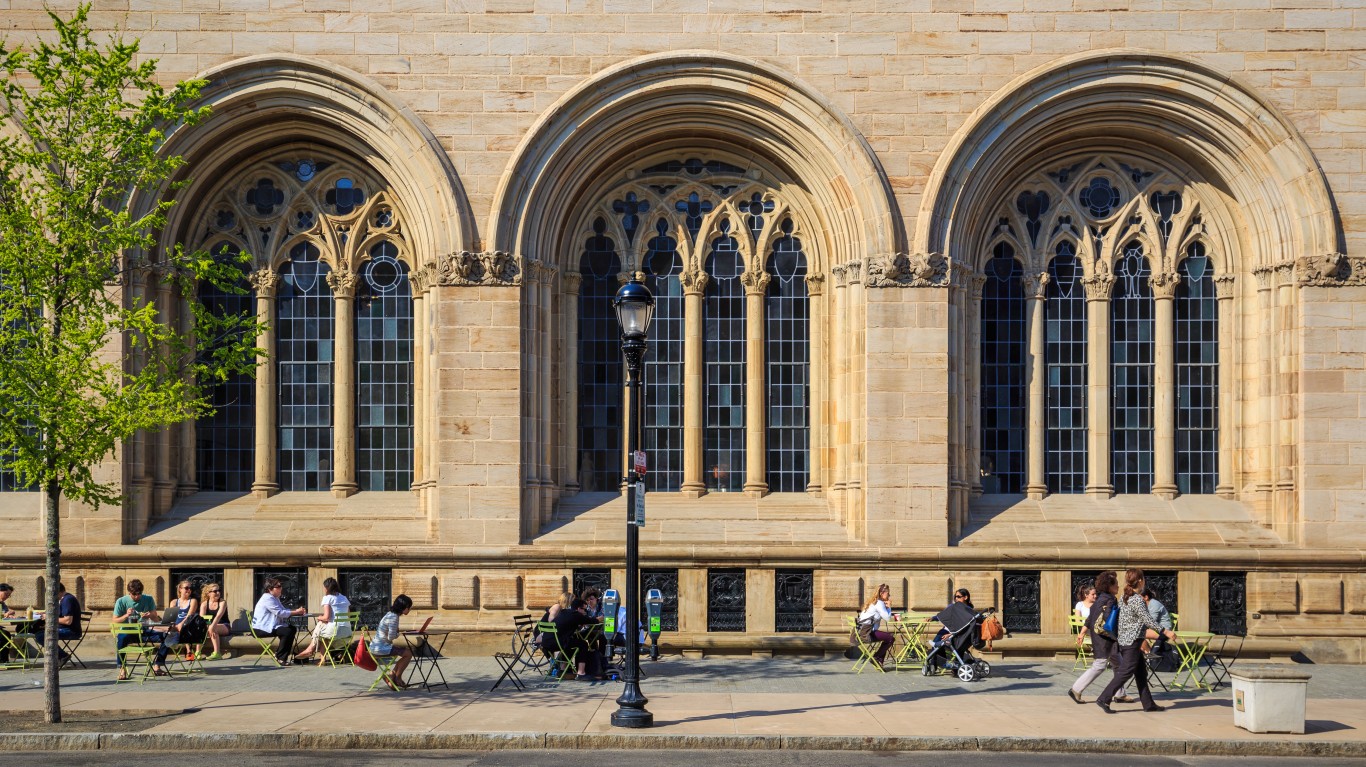
5. Yale University Art Gallery
> Odds two random artworks are by artists of a different race: 31.2%
> Pct. of collection by white artists: 81.7%
> Pct. of collection by Black artists: 0.7%
> Pct. of collection by Hispanic or Latino artists: 2.3%
> Pct. of collection by Asian artists: 14.2%
> Location: New Haven, CT
Along with other museums in Connecticut, the oldest university museum in America has started initiatives to diversify its trustee boards and collections. The Yale University Art Gallery is based in New Haven, a city with a predominantly nonwhite population. A spokesperson for the gallery told the Hartford Courant in December the museum recently launched a strategic plan to improve equality, inclusion, and racial justice in the gallery’s overall effort.
[in-text-ad-2]
4. Museum of Fine Arts, Boston
> Odds two random artworks are by artists of a different race: 33.5%
> Pct. of collection by white artists: 79.9%
> Pct. of collection by Black artists: 1.1%
> Pct. of collection by Hispanic or Latino artists: 2.1%
> Pct. of collection by Asian artists: 16.1%
> Location: Boston, MA
The museum set up a $500,000 fund in 2020 to boost diversity efforts after a group of Black middle school students on a field trip said museum staff and patrons targeted them with racist comments. Though the museum said it couldn’t verify the claims, the move toward fostering a more inclusive environment came amid an accounting into the lack of diversity – among both trustee boards, museum staff, collections, and exhibitions – at art galleries nationwide.
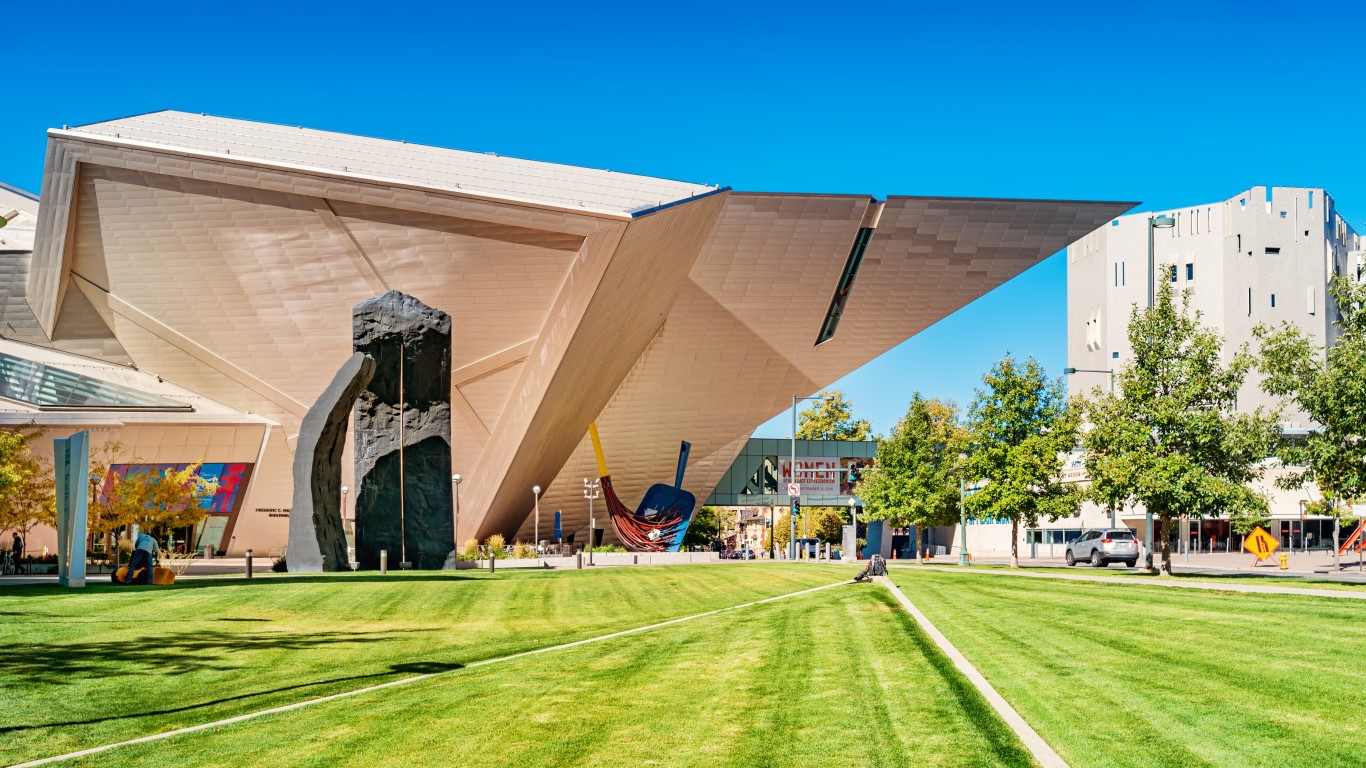
3. Denver Art Museum
> Odds two random artworks are by artists of a different race: 35.0%
> Pct. of collection by white artists: 79.8%
> Pct. of collection by Black artists: 1.5%
> Pct. of collection by Hispanic or Latino artists: 5.4%
> Pct. of collection by Asian artists: 9.5%
> Location: Denver, CO
In response to American museums’ Eurocentric reputation that has long eschewed minority representation, the Denver Art Museum recently completed a renovation and expansion of its campus, anchored by a new gleaming Martin Building. Inside, art by indigenous and Latin American artists are prominently featured.
[in-text-ad]

2. Los Angeles County Museum of Art
> Odds two random artworks are by artists of a different race: 35.6%
> Pct. of collection by white artists: 78.2%
> Pct. of collection by Black artists: <0.1%
> Pct. of collection by Hispanic or Latino artists: 2.9%
> Pct. of collection by Asian artists: 17.7%
> Location: Los Angeles, CA
A 2020 survey by Curate LA and The Future Left gave eight out of 12 Los Angeles museums a pass for accessibility and transparency criteria, including the Los Angeles County Museum of Art. The museum, however, ranked at the bottom for nonwhite and gender-based representation in leadership positions. But like other museums, the LACMA has been working to be more representative of the diversity of the city in which it resides.

1. Museum of Art, Rhode Island School of Design
> Odds two random artworks are by artists of a different race: 36.4%
> Pct. of collection by white artists: 78.2%
> Pct. of collection by Black artists: 1.0%
> Pct. of collection by Hispanic or Latino artists: 3.1%
> Pct. of collection by Asian artists: 15.1%
> Location: Providence, RI
It’s perhaps telling that the most diverse art museum in the country still retains a collection that is 78% represented by white artists. But relative to other major art galleries in the country, the RISD Museum is a class leader in diverse representation despite having so few works by Black and Hispanic or Latino artists.
Methodology
To determine the most racially diverse art museums, 24/7 Tempo reviewed data from the 2019 research article “Diversity of artists in major U.S. museums” by Topaz et al., published in the peer-reviewed open access scientific journal PLOS One, a publication of the Public Library of Science. Art museums were ranked based on the likelihood that two artworks in a museum’s collection picked at random would be by artists of different ethnicity.
The same method is used in the USA Today Diversity Index. Data on the representation of Black, white, Hispanic or Latino, and Asian artists, as well as artists of other races, in each collection used to calculate the rank came from Topaz et al. and include over 10,000 identifiable artist records.
The Average American Has No Idea How Much Money You Can Make Today (Sponsor)
The last few years made people forget how much banks and CD’s can pay. Meanwhile, interest rates have spiked and many can afford to pay you much more, but most are keeping yields low and hoping you won’t notice.
But there is good news. To win qualified customers, some accounts are paying almost 10x the national average! That’s an incredible way to keep your money safe and earn more at the same time. Our top pick for high yield savings accounts includes other benefits as well. You can earn up to 3.80% with a Checking & Savings Account today Sign up and get up to $300 with direct deposit. No account fees. FDIC Insured.
Click here to see how much more you could be earning on your savings today. It takes just a few minutes to open an account to make your money work for you.
Our top pick for high yield savings accounts includes other benefits as well. You can earn up to 4.00% with a Checking & Savings Account from Sofi. Sign up and get up to $300 with direct deposit. No account fees. FDIC Insured.
Thank you for reading! Have some feedback for us?
Contact the 24/7 Wall St. editorial team.
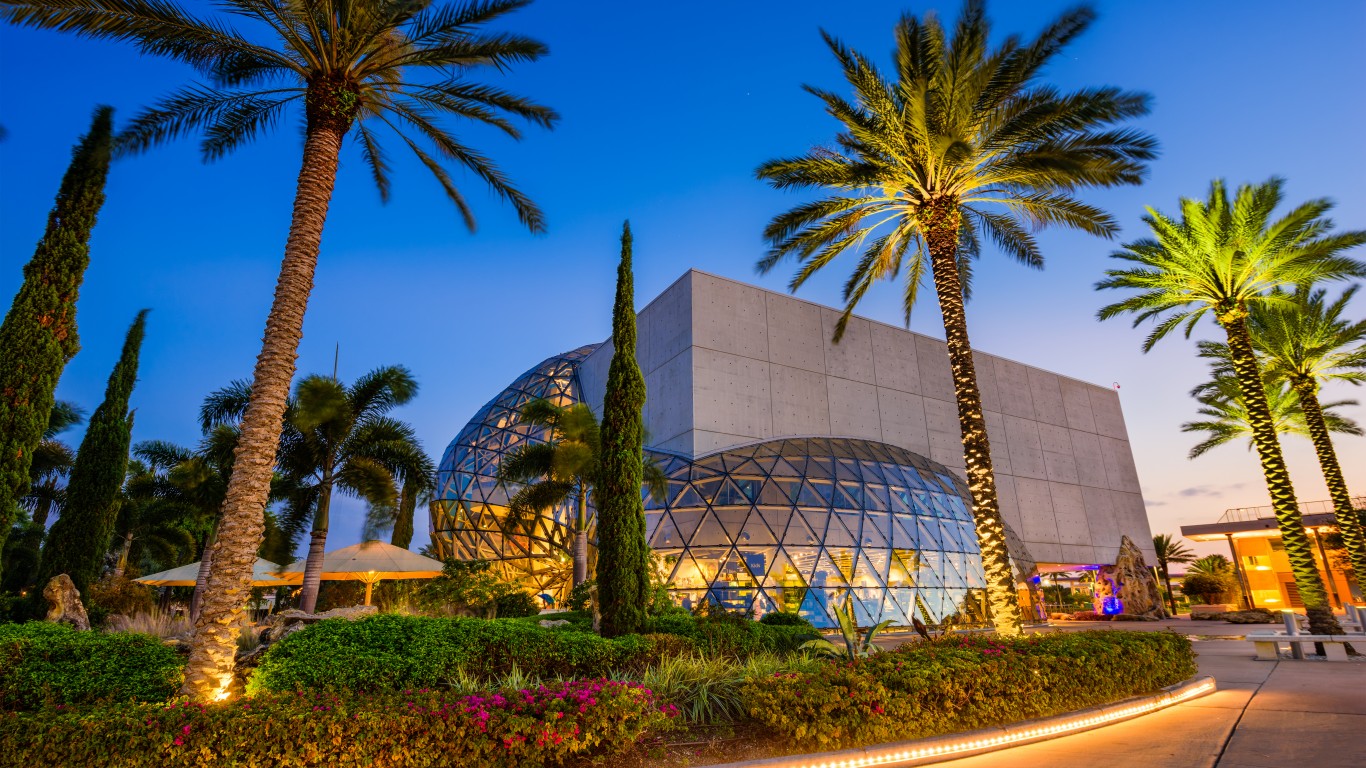 24/7 Wall St.
24/7 Wall St.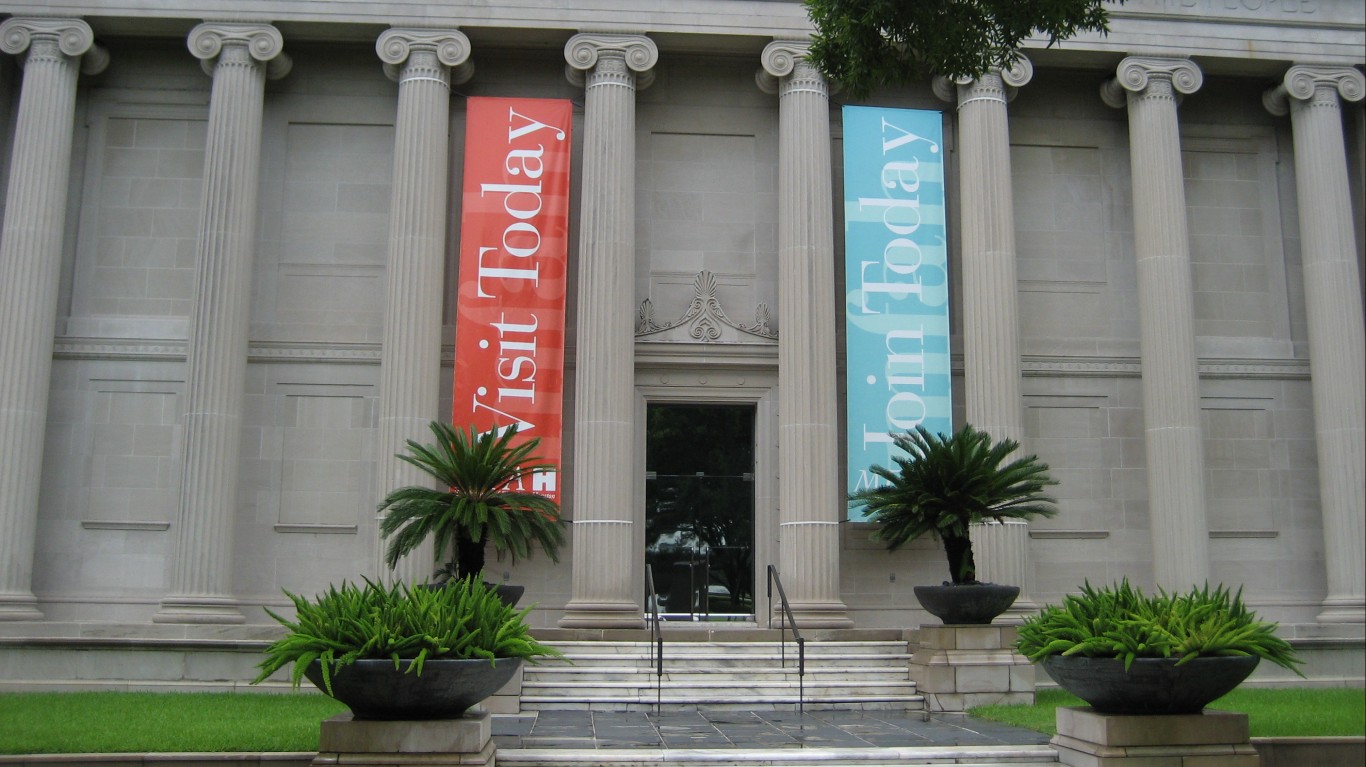
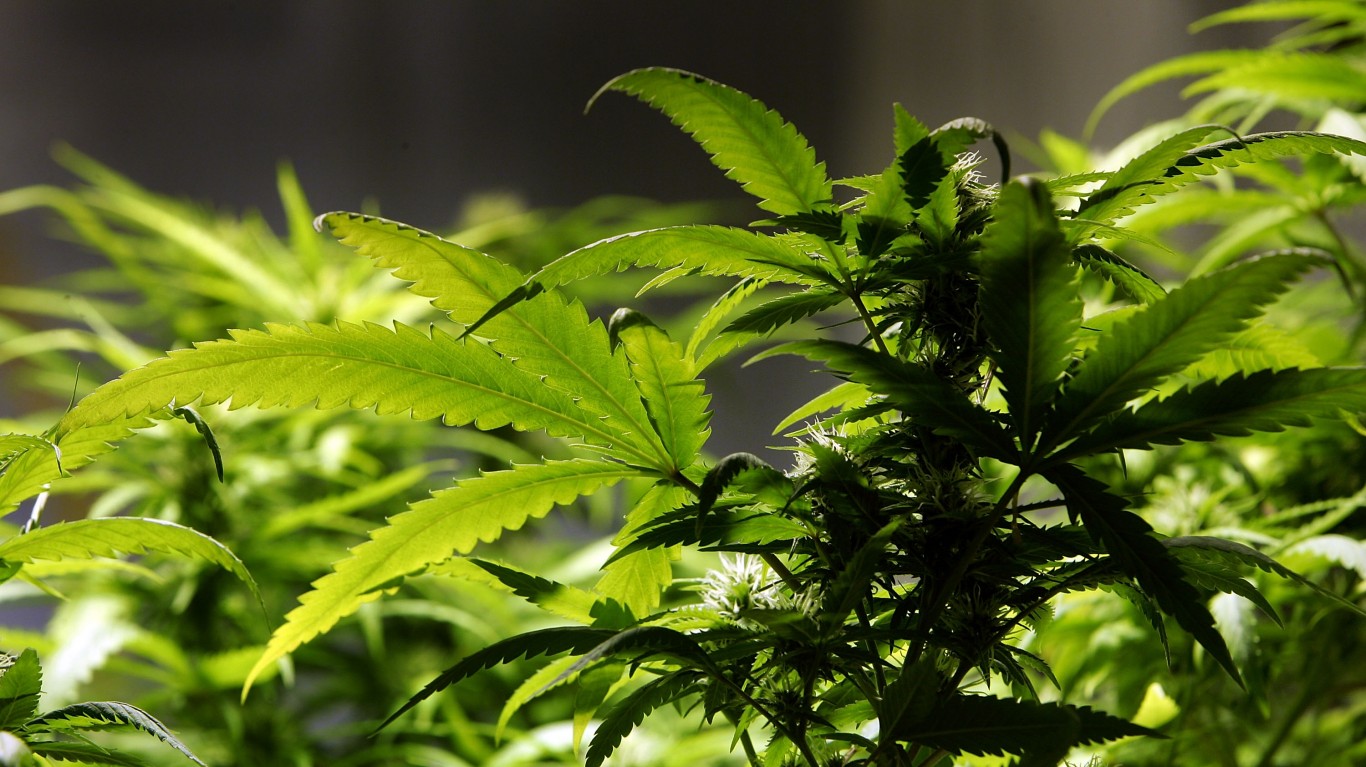 24/7 Wall St.
24/7 Wall St.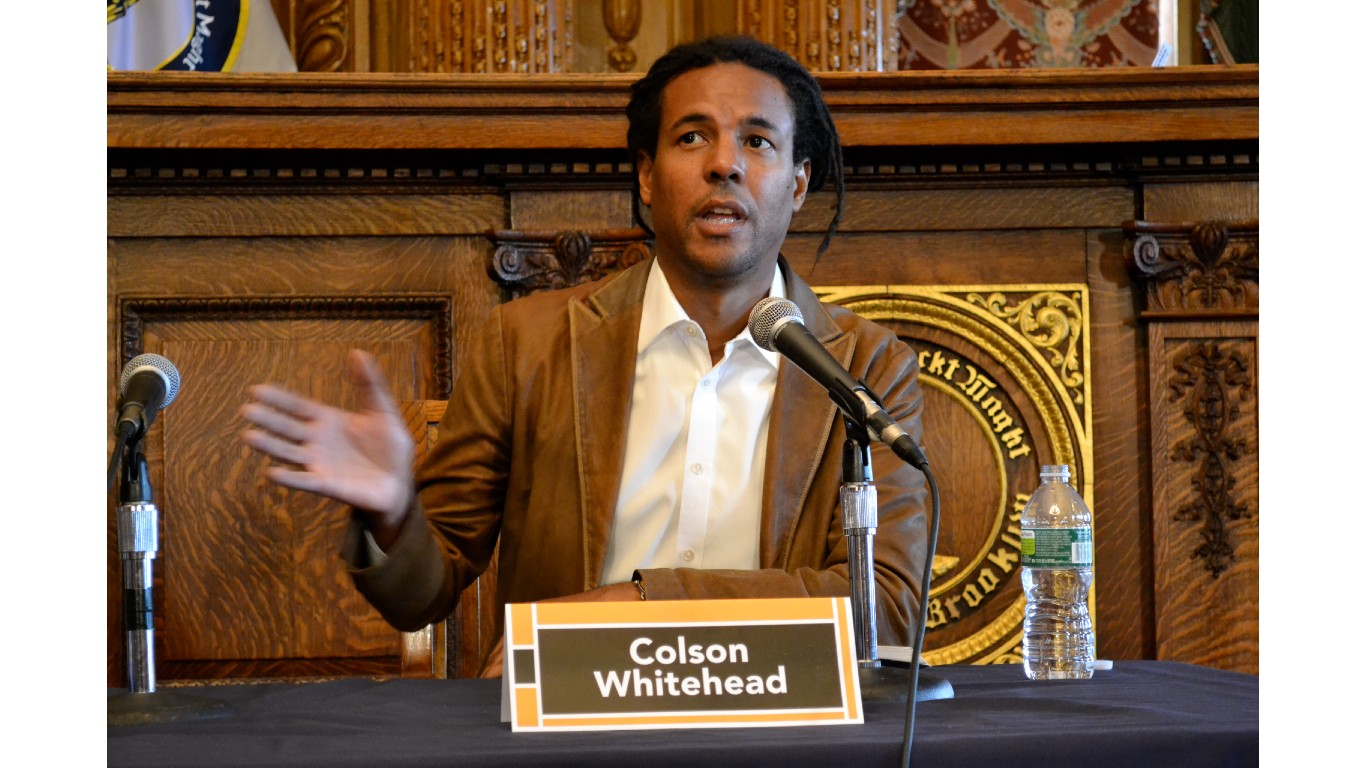 24/7 Wall St.
24/7 Wall St.